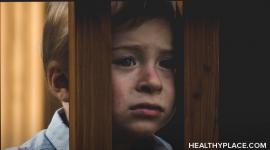References to DMDD
What is Disruptive Mood Dysregulation Disorder (DMDD)?
Mayes, S., Waxmonsky, J., Calhoun, S., & Bixler, E. (2016). Disruptive mood dysregulation disorder symptoms and association with oppositional defiant and other disorders in a general population child sample. Journal of Child and Adolescent Psychopharmacology. 26(2):101–106
Symptoms of Disruptive Mood Dysregulation Disorder
Roy, A., Lopes, V., & Klein, R. (2014). Disruptive mood dysregulation disorder: a new diagnostic approach to chronic irritability in youth. American Journal of Psychiatry. 171(9):918–924.
DMDD Diagnosis: DSM 5 Criteria for Disruptive Mood Dysregulation Disorder
Johnson, K., & McGuinness, T. M. (2014). Disruptive mood dysregulation disorder: A new diagnosis in the DSM-5. Journal of Psychosocial Nursing. 52(2), 17-20.
What are the Causes of DMDD?
Matijasevich, A., Murray, J., Cooper, P., Anselmi, L., Barros, A., Barros, F., Santos, I. (2015) Trajectories of maternal depression and offspring psychopathology at 6 years: Pelotas cohort study. Journal of Affective Disorders. 174:424–431
Starr, R., MacLean, D. & Keating, D. (1991). Life-Span Development of Child Maltreatment: The Effects of Child Abuse and Neglect. New York, NY: The Guilford Press.
Wolfe, D., & McGree, R. (1991). Assessment of Emotional Status Among Maltreated Children: The Effects of Child Abuse and Neglect. New York, NY: The Guilford Press
Treatment for Disruptive Mood Dysregulation Disorder
Copeland, W., Angold, A., Costello, E., & Egger, H. (2013). Prevalence, comorbidity, and correlates of DSM-5 proposed disruptive mood dysregulation disorder. American Journal of Psychiatry, 170(2), 173-179.
Pappadopulos, E., Woolston, S., Chait, A., Perkins, M., Connor, D., & Jensen, P. (2006). Pharmacotherapy of aggression in children and adolescents: Efficacy and effect size. Journal of the Canadian Academy of Child and Adolescent Psychiatry, 15(1), 27-39.
Challenges of Parenting a Child with DMDD
Carlson, G., Danzig, A., Dougherty, L., Bufferd, S., & Klein, D. (2016). Loss of temper and irritability: the relationship to tantrums in a community and clinical sample. Journal of Child & Adolescent Psychopharmacology. 26(2):114–122.
Mayes, S., Waxmonsky, J., Waschbusch, D., et al. (2016). Mother, father, and teacher agreement on disruptive mood dysregulation symptoms in a child psychiatric sample. International Journal of Mental Health Psychiatry. 2(2).
Can an Adult Be Diagnosed with DMDD?
Copeland, W., Angold, A., Costello, E., & Egger, H. (2013). Prevalence, comorbidity, and correlates of DSM-5 proposed disruptive mood dysregulation disorder. American Journal of Psychiatry. 170:173–179.
DMDD vs Bipolar Disorder: What’s the Difference?
Stringaris, A., Baroni, A., Haimm, C., Brotman, M., Lowe, C., Myers, F., et. al. (2010). Pediatric bipolar disorder versus severe mood dysregulation: Risk for manic episodes on follow-up. Journal of the American Academy of Child and Adolescent Psychiatry. 49:397–405.
Shirazi, E., Shabani, A., & Shahrivar, Z. (2014). Disruptive mood dysregulation disorder and bipolar disorder: Convergence or divergence? Iranian Journal of Psychiatry & Clinical Psychology, 20(2), 95-110.
DMDD and Autism: How Are the Two Related?
Mayes, S. D., Waxmonsky, J., Calhoun, S., Kokotovich, C., Mathiowetz, C., & Baweja, R. (2015). Disruptive mood dysregulation disorder (DMDD) symptoms in children with autism, ADHD, and neurotypical development and impact of co-occurring ODD, depression, and anxiety. Research in Autism Spectrum Disorders, 18, 64-72.
APA Reference
Jarrold, J.
(2018, July 22). References to DMDD, HealthyPlace. Retrieved
on 2025, December 11 from https://www.healthyplace.com/parenting/dmdd/references-to-dmdd



